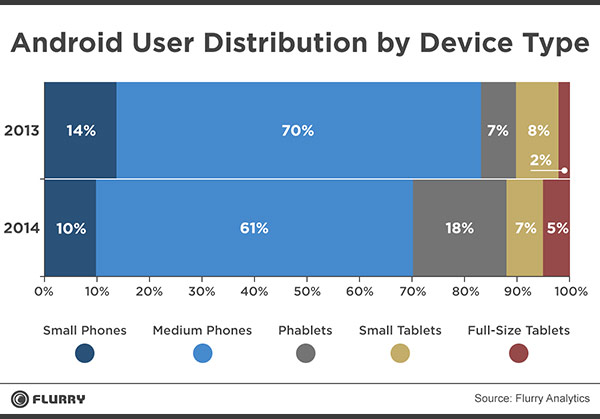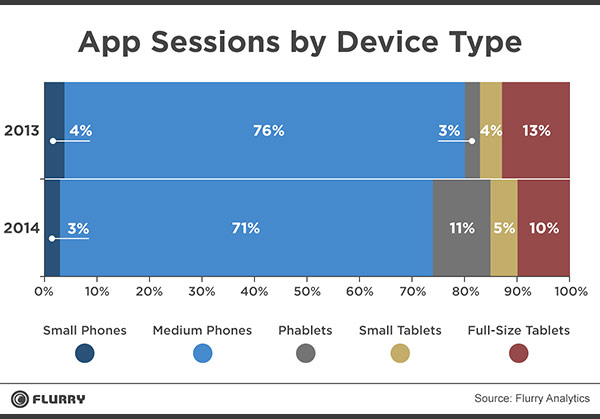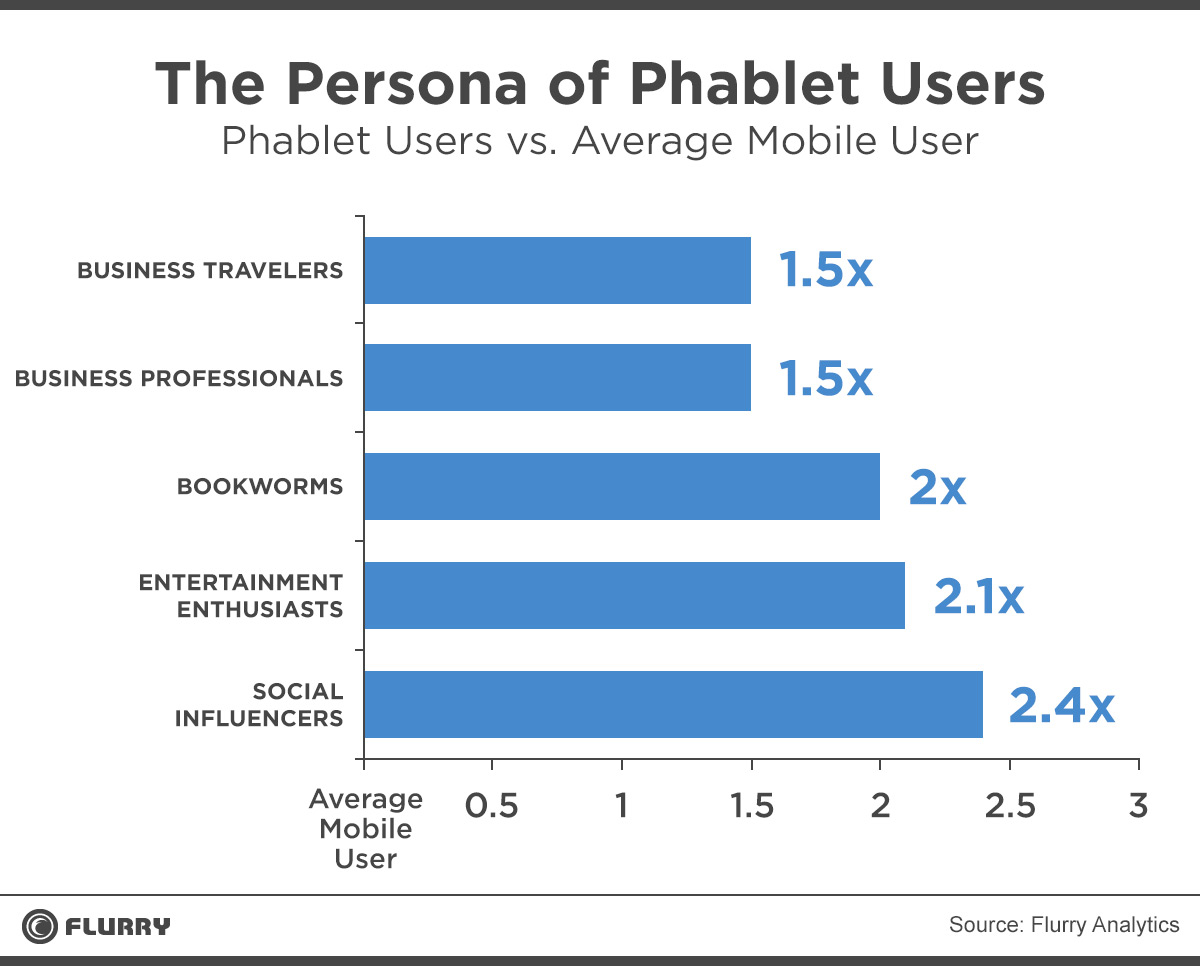Earlier this year, Blackberry CEO Thorsten Heins questioned the future of tablets in a Bloomberg interview, saying that “in five years, I don’t think there’ll be a reason to have a tablet anymore.” Indeed, the release of smartphones with larger screens, such as the Galaxy Note, have given rise to the term “phablet” to indicate a device that is somewhere between a phone and a tablet, ostensibly eliminating the need to have both devices.
So are the lines between mobile devices blurring?
Maybe a little, but we don’t see it having any kind of substantial impact on tablet sales in the near future. For now, the lines are more distinct than ever—even if the terminology is not. Here are some key points to consider:
+ Phablet is a misleading term, because it’s really just a smartphone with a bigger screen. A phablet (defined as having touchscreen between 5 and 6.9 inches) is a replacement for a smartphone.
+ In the early days of smartphones, smaller devices were desirable, but now that touch has become more sophisticated and responsive, screen sizes have got larger.
+ MAGNA currently estimates that there are about 169 million smartphones and 87 million tablets in the hands of Americans—but the latest ComScore data shows that “phablets” only account for about four percent of smartphones (just under seven million).
+ Recent research from Flurry confirms our own findings that tablets are largely an at-home, media-playing device (content, design, gaming), while smartphones are task-driven (navigation, shopping, mobile banking). We think “phablets” fall into the latter category as well.
+ We agree with Time reporter Jared Newman that “phablets” are a niche, not a fad, and their emergence is simply an indication that consumers are enjoying bigger screens.
+ A recent downward trend in iPad sales has led to speculation that tablets could end up becoming more niche themselves, but it’s not that surprising given the influx of cheaper Android devices like the Kindle Fire. Tablets remain the fastest growing media machines in history, and we project continued (albeit slower) growth over the next five years.
As the debate continues, what’s important for marketers is to be aware of is how consumers engage with brands on the various devices:
+ Phones = more ownership and more situations
+ Phones = shopping as an activity (product reviews/research, driving in-store, show-rooming, driver of purchase intent)
+ Tablets are used mostly at home, for personal content consumption
+ Tablets generate better video ad recall than other devices (see June 2013 Media Economy Report), and generate more spending per user compared to smartphones
+ eMarketer: In 2013, 63% of tablet users will make purchases vs. 39% of smartphone users
For more information, contact [email protected] or [email protected].




